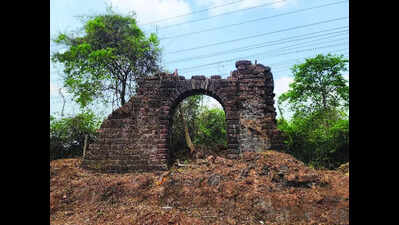Trending
ASI initiative reopens grand gateway once locked in obscurity in Old Goa
Panaji: An initiative of the Archaeological Survey of India (ASI) has helped salvage a majestic, centuries-old arch along the iconic royal passage (Raj Vithi) from obscurity, after vegetation and long neglect threatened to engulf the heritage site.
The south-facing arch on the Kadamba plateau, just over a kilometre from Old Goa’s Unesco World Heritage church complex, lies along the stone-paved road from the former capital to Agasaim.
“It took about a week to clean up the vegetation. This is just one of the sites and remains on the plateau, which continues to be unattended and unprotected,” said Abhijit Ambekar, superintending archaeologist holding additional charge in Goa.
Old Goa, as a former capital, was a protected city with a roughly 21km outer fortification wall that encompassed areas of Corlim, Carambolim, Bainguinim, Sao Pedro, and other suburbs.
In the preceding era before Afonso de Albuquerque ousted Adil Shah in Nov 1510, the port was important for the dynasty.
“During the Portuguese period, revenue from Old Goa was significant and this greatly contributed to the Portuguese on the economic front,” Brian Wilson, a US researcher, writes in a historical perspective with Ambekar and Rohini Pande. The authors add, “This came from customs duties, especially those levied on horses imported from Ormuz and the Arabian coast.”
The horses were supplied to the Vijayanagar empire from Old Goa. “Three hundred stables on the plateau still exist and our objective is to protect these unattended heritage structures in the future,” Ambekar said.
The research work by Ambekar and the other two has brought to focus the past grandeur of the outer fortification wall.
The ASI is working on a proposal for the protection of certain stretches of the wall along with the stables, gateways, and bastions.
“The long stretch has a few gateways in between, which still exist. The arch needs regular upkeep,” Ambekar said.
Heritage activists emphasise govt’s role in conserving these iconic assets. “The history of Old Goa dates back more than 1,000 years because of the importance of the port,” said Yogesh Nagvenkar, the president of Heritage Connect Trust.
“In the 17th century, it was the eighth best city of the world and it is govt’s responsibility to protect it by any means through its own or CSR funding.” he said.
End of Article
Follow Us On Social Media










